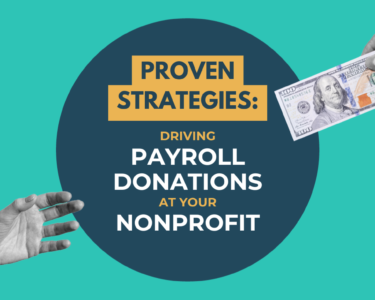For the past several years, my colleagues and I at the Bill & Melinda Gates Foundation have been working with donors who are choosing collaborative funds — those that pool the donations of multiple funders to amplify the impact that any one donor could have — to advance their giving strategies. We believe collaboratives are an important tool to propel greater giving around the world and direct it to the causes and communities that need it most. And we are committed to supporting research into the effectiveness of such funds.
One of the questions we hear most often from donors about collaboratives is: “How can we understand the impact of giving to collaborative funds relative to giving directly to nonprofit organizations?” Our answer is that collaboratives achieve and evaluate their impact on multiple levels, including the strengthening of grantees, advances in systems or fields they focus on, and grantmaking practices of donors who give to them, as articulated in The Bridgespan Group’s report, “How Philanthropic Collaboratives Measure, Evaluate, and Learn.”
Adding Grantee Voices to the Picture
The perspectives of grantees themselves is an incredibly important component of understanding and measuring the impact of collaborative funds, too. The Bridgespan report found that 87 percent of their 171 survey respondents collect feedback from grantees/recipients as part of their measurement and learning — the most common activity cited. So, collaboratives are prioritizing feedback from grantees in their own assessments of their work.
Given this, we were excited to partner with the Ford Foundation to support research from the Center for Effective Philanthropy (CEP) to better understand the themes that emerge from across this grantee feedback — and to better understand how grantees experienced work with collaborative funds.
The CEP report, Bridging the Gap: Grantee Perspectives of Intermediary Funders, focuses on a broad set of intermediaries (including a subset of collaborative funds) and provides insights that can help any intermediary understand how to better partner with and advance the important work of their grantees. The findings also, however, draw strong conclusions with limited data and sample constraints, which indicates more and deeper research is needed to truly understand the impact of collaboratives themselves.
Among the actionable takeaways of CEP’s research:
- Grantees’ experiences depend on the practices of funders, rather than the form of the funding vehicle. CEP found little variation between grantees’ experiences with intermediary funders and their experience with what CEP calls “originating funders,” such as private and community foundations that provide grants directly to nonprofits.
- Grantees value open and frequent communication, trusting relationships, and long-term partnerships. This is true whether grantees are receiving support from intermediaries or originating funders.
- Intermediaries were rated slightly higher by grantees when it came to understanding of grantees’ fields and advancing knowledge in their fields.
- Highly rated intermediaries listen closely to their grantees about what they need and respond to their feedback, rather than imposing one-way relationships.
- Grantees value the flexibility of long-term grants, but many intermediaries operate on shorter funding cycles than other types of funders.
Lessons Learned for Future Research
These insights are a useful first step to understanding how grantees experience their engagement with intermediaries, including collaborative funds. However, the data in the CEP report is limited in some important ways. While the data is drawn from thousands of grantees’ offering feedback about their funders, the sample includes just 24 intermediaries who have sought grantee feedback through CEP’s Grantee Perception Report. Within this sample are various types of intermediaries beyond collaborative funds and the small, disparate sample doesn’t lend itself to disaggregation.
Additionally, it would be useful to see research that disaggregates and focuses more on grantee experiences with explicitly equity-focused and community-based collaborative funds, such as The California Black Freedom Fund, the Hive Fund for Climate and Gender Justice, the Pop Culture Collaborative, AAPI Civic Engagement Fund, and Four Freedoms Fund among many others. These types of funds represent the majority of collaborative funds, with 70 percent of funds in Bridgespan’s research describing racial and ethnic or gender equality as either a “core” or “intentional” focus of their work. While CEP confirmed that equity-focused funds were represented at about this level in their report’s dataset (see some of those represented in this list labeled as “regrantor” or “public charity”, again, the sample is too small to disaggregate and offer a clear picture of how these funds are impacting grantee experiences.
Perhaps the most important takeaway from Bridging the Gap is our need for more research to understand the experience of grantees of collaborative funds.
Happily, more is forthcoming, led by Arabella Advisors and Philanthropy Together. Their research will look specifically and comprehensively at the grantee experience of collaborative funds and include a deeper look at community-based and equity-centered funds.
The positive experience of grantees is central to any high impact philanthropy portfolio. We are grateful that CEP research lifts up such experience, and we are eager to see what more targeted research will reveal and how that can lead the field of collaboratives forward.
Jennifer Stout is deputy director of philanthropic partnerships at the Bill and Melinda Gates Foundation. Find her on LinkedIn.
Editor’s Note: CEP publishes a range of perspectives. The views expressed here are those of the authors, not necessarily those of CEP.
👇Follow more 👇
👉 bdphone.com
👉 ultraactivation.com
👉 trainingreferral.com
👉 shaplafood.com
👉 bangladeshi.help
👉 www.forexdhaka.com
👉 uncommunication.com
👉 ultra-sim.com
👉 forexdhaka.com
👉 ultrafxfund.com
👉 ultractivation.com
👉 bdphoneonline.com




